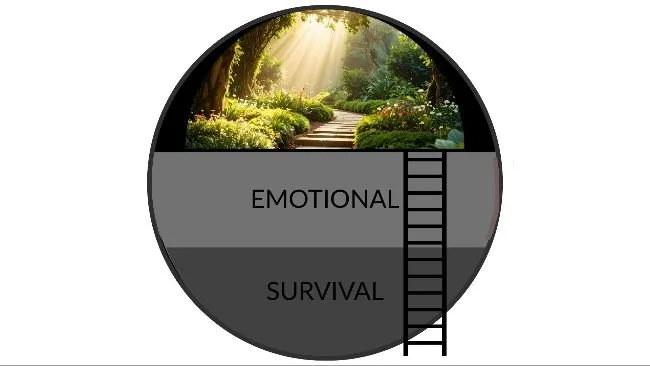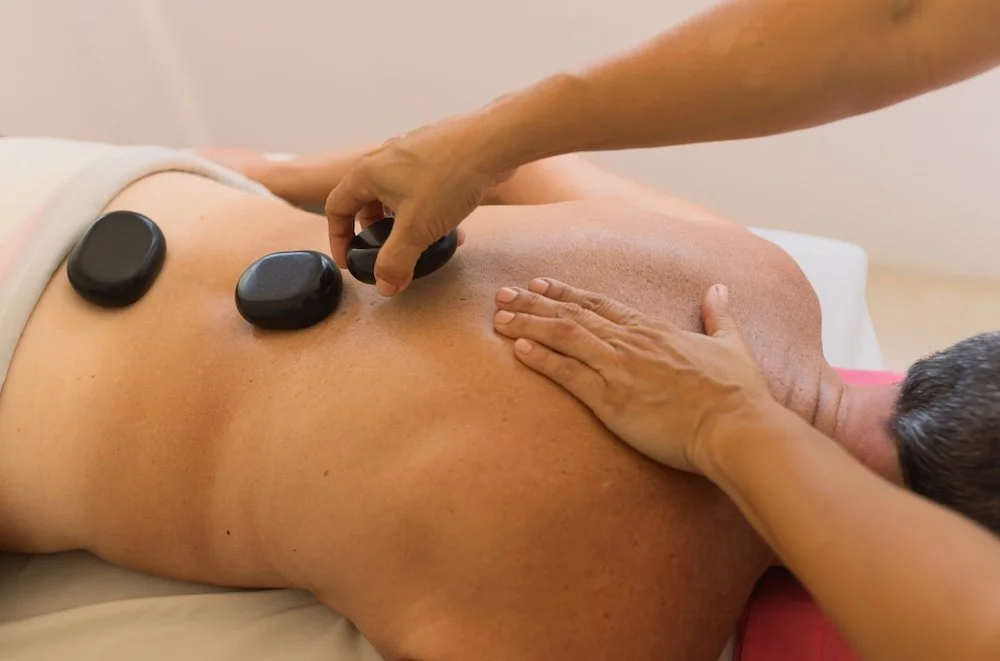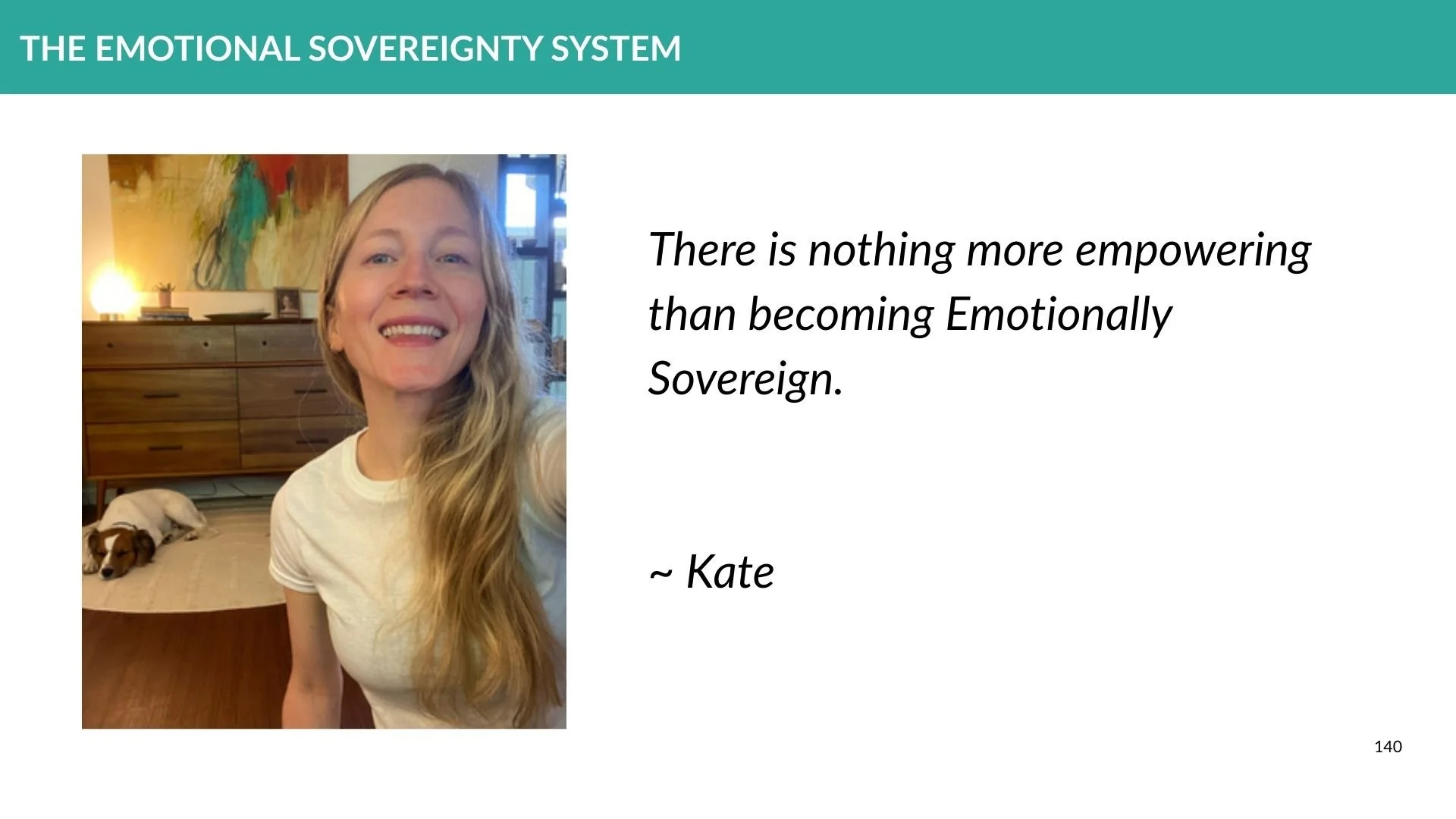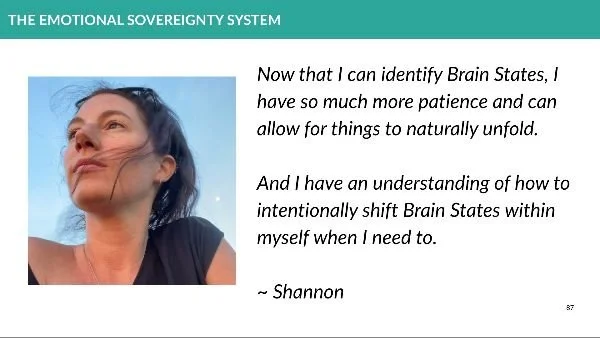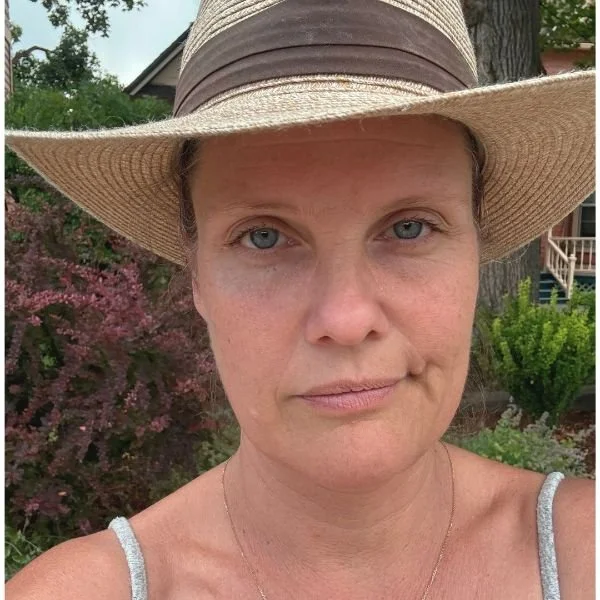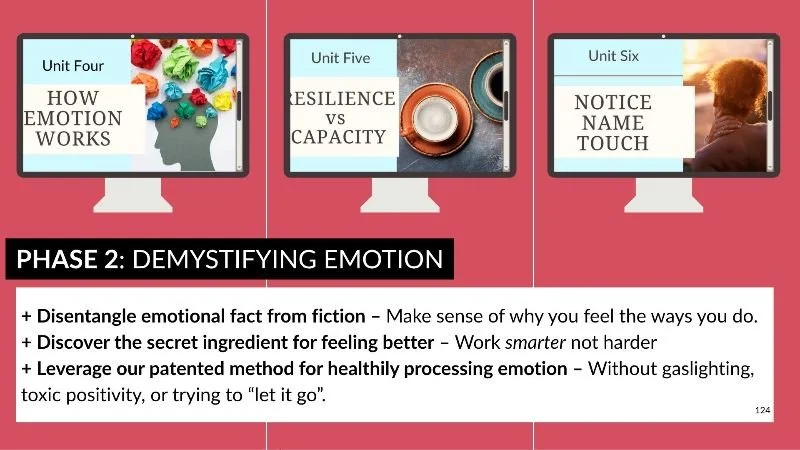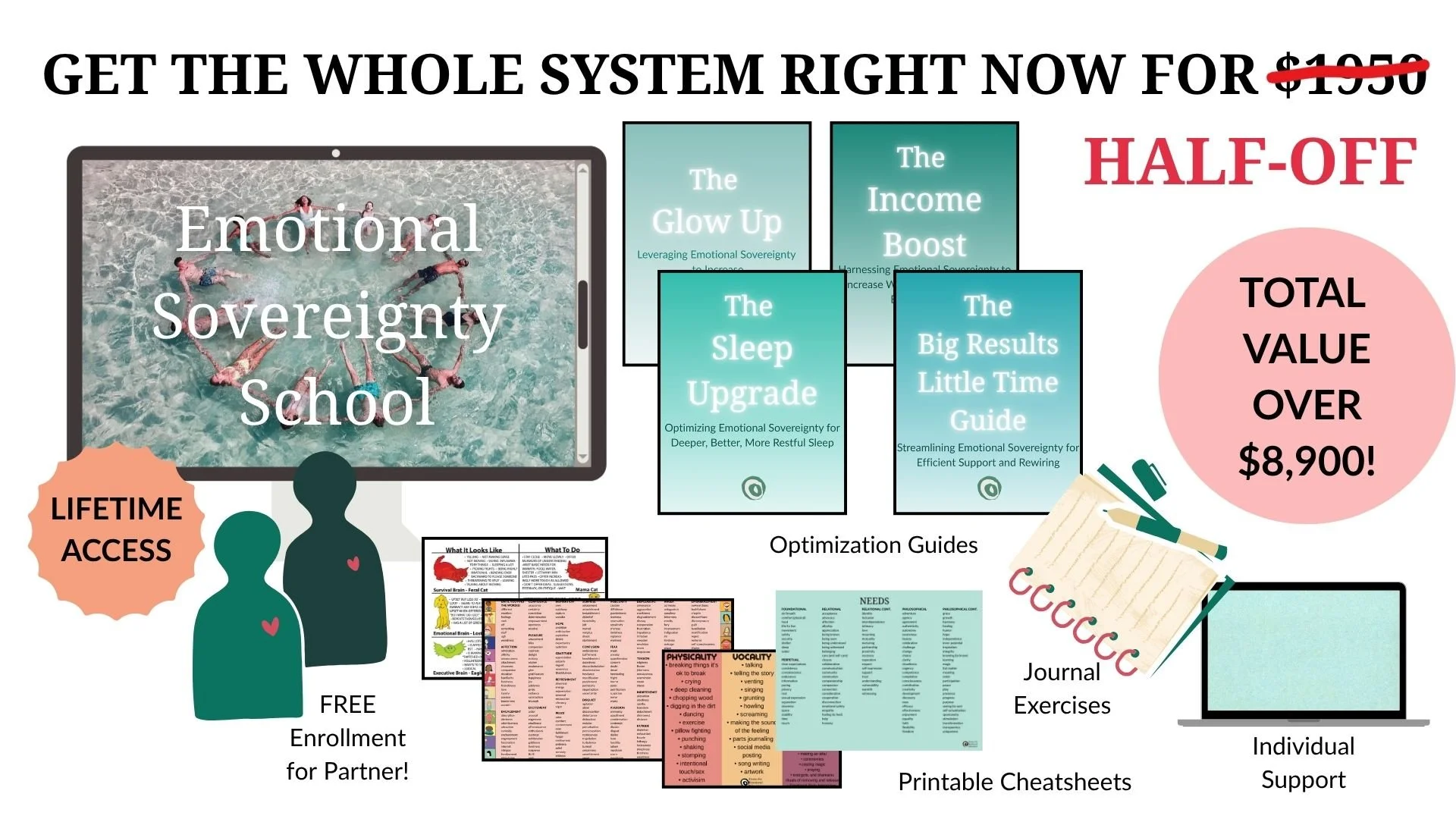We're pretty cozy at the mo', writing to you from our favorite coffee shop. Our dog BobbyJon is "working hard" too – being super cute and snoozing belly up.
In this week's newsletter we're talking about the perimenopausal brain!
Because, unless you live on a planet devoid of reproductive systems, perimenopause affects you too!
The Lowdown on the Perimenopausal Brain
Perimenopause is the transition period between our reproductive years and non-reproductive years (menopause), when estrogen and progesterone production fluctuate wildly on the way to what will eventually be their lowest levels.
Some call it Cougar Puberty(!) — because of how it echoes the hormonal fluctuations of the early teen years when estrogen and progesterone production was ramping up instead of down.
In general, this time in our lives gets a seriously bad wrap due to lack of information, embarrassingly low levels of research, and a PR machine that wants to sell products for "horrendous" "catastrophes" like "menobelly".
But here at the Center, we believe that if we all learn practical, compassionate ways to work with brain states during the critical era of perimenopause, we can radically smooth our hormonal transition, set ourselves up for greater connection and success in this chapter (and beyond), and live into a reclaimed truer identity of power and wisdom. (Hello, wise matriarch!)
It's important because you already know the deal:
Fluctuating hormones during perimenopause drastically affect the nervous system!
Every human brain is designed to move fluidly between brain states depending on the moment-to-moment "best approach" to the current environment. But due to the random and dramatic fluctuations of estrogen and progesterone during perimenopause we often shift between brain states unpredictably, unprovoked, and at unwelcome times, despite our best efforts to keep cool and remain calm.
What's Happening inside the Brain:
The brain's three main super-networks – Survival, Emotional, and Executive – get majorly f-ed with (that's the scientific term, right?) when reproductive hormones drop. These hormones don't just stick to the business of the "birds and the bees", not by a long shot... Even though they aren't technically "neurohormones" (made for working inside our skulls), they get "all up in there" – modulating just about everything that matters, including our brain function.
The Survival System Impact
Estrogen is involved in (all) our thermoregulation and circadian rhythms — so when it drops, we see increases in body temperature without exertion, and increases in alertness when one should be sleeping. These are symptoms our nervous system already associates with danger, because when we're met with a predator our thermoregulation gets interrupted and our hyper-vigilance goes way up.
So, even though our lack of sleep and our hot flashes are estrogen-related, our nervous system will assume it's danger-related and cue a Survival reaction (Fight, Flight, Freeze, Appease).
Yank away a key ingredient in regulation, and the system in charge of regulation is going to get dysregulated!
What this means is that perimenopause will increase our susceptibility of slipping into Survival Mode.
Survival Brain State
⭐️ Fight, Flight, Freeze, or Appease.
A perimenopausal person in this state might:
Lash out unexpectedly. (Fight)
Suddenly ditch out from an appointment, obligation, or even a key relationship. (Flight)
Experience stuckness, paralysis, inability to get anything done. (Freeze)
Self-sacrifice, over-yes, people please. (Appease)
Fun fact: In not-so-distant times, people displaying sudden or increased Survival reactions during this era of hormonal transition were deemed insane, or dangerous, and sometimes excommunicated or put in asylums.
The Emotional System Impact
Estrogen and progesterone are involved with mood modulation. Their random fluctuation during perimenopause will increase the likelihood of equally random-seeming flushes of emotion, and their overall decline will increase the intensity of our emotional experience in general.
In laymen's terms it's called "mood swings", y'all, but what's really happening is not increased emotion (emotion is happening all the time) but decreased hormonal support for smooth emotional management.
Yank away a key ingredient in emotional regulation, and the system in charge of emotional regulation is going to get dysregulated!
What this means is that perimenopause will increase the likelihood, intensity, and unpredictability of Emotional Mode.
Emotional Brain State
⭐️ Is looking for ways to process, express, or suppress feelings.
A perimenopausal person in this state might:
Fall into an emotional "vibe" that gets bigger and lasts longer than usual.
Notice many things they no longer like about their life, their job, their relationships, or themselves.
Assess events, issues, or people unfavorably.
Experience intense emotion (longing, frustration, etc.) that requires action, without seeing any reasonable ways to take action.
Act rashly, and make decisions based on emotion.
Feel competing emotions at the same time.
The emotional needs of this hormonal transition are intense, yet support is often lacking, or withheld due to misunderstanding, or replaced with medical intervention that treats symptoms instead of also supporting emotional processing. Due to this, many people during this era experience a sense of isolation, confusion, and self-blame.
The Executive System Impact
Dude, estrogen is one busy bee.
It boosts the production, release, and function of dopamine and acetylcholine – two key neurotransmitters associated with reward, memory, focus, and motivation.
Yank away key ingredients in the ability to cognitively function, and the system in charge of cognitive function is going to... well, not function no more!
What this means is that perimenopause is likely to cause interruptions in the smooth operation of the Executive System.
Executive Brain State
⭐️ Exhibits clear thinking, empathy, flexibility, creativity, cooperation, humor, memory, etc..
A perimenopausal person in a disrupted version of this state might:
Experience "brain fog".
Show symptoms often associated with ADHD.
Find it difficult to start tasks.
Forget things.
Unconsciously seek more instant gratification sources of dopamine like salty-sweet foods, video games, social media, alcohol, or shopping.
The Good News
It's called a transition period for a reason.
Once the fluctuations subside, the brain adapts to the lack of estrogen and progesterone.
Many people experience the arrival at this post-reproductive era like a homecoming – a return to the person they were before their body attuned itself to the goal of reproduction. Questions rise to the surface, like:
Who am I now?
What do I want?
What do I value most?
And...
⭐️Transition becomes fast-tracked metamorphosis when we get enough support.
If you, or someone you love is crossing this hormonal threshold... here are some ideas:
1. Double-down on Survival Support
Dress in layers for easy temperature regulation.
Prioritize sleep.
Never get hungry.
Never get thirsty.
Have a couple Survival Support strategies at the ready (ask us for some, we'll hook you up).
Explore HRT if that's right for you.
2. Get more Emotional Support than ever before
Make that coffee date with your friend/spouse twice as long and twice as regular..
See how many feelings you can name in a day. (A dozen or more feelings per day is normal.)
Empathize with your feelings, no matter how contradictory they are.
Don't wait for a reason to cry or emote, schedule regular emoting opportunities.
Turn up the touch! Increasing your levels of oxytocin (which helps regulate other neurotransmitter levels) will help reassure your nervous system that you aren'y actually dying.
Hire a professional. You're worth it.
3. Give your Executive System some grace
Write it down. Whatever it is, just write it down.
Don't make fun of yourself, you're having withdrawal symptoms from vital hormones, you're not "loony" or whatever other joke you usually make.
Ride the focus wave: Focus, take a break, go pee, pet the cat, name some feelings, then come back for more focus.
Your brain is a new dance partner — collaborate, instead of control.
This is what we teach.
How to use brain systems and state-specific support to meet our nervous system where it is – in any chapter of our lives – to increase efficacy, ease, success, connection, enjoyment, and more.
For the perimenopausal brain, it's not about denigrating ourselves, giving up, or giving over our power — it's about knowing ourselves, doubling down on support, and turning the mythos about this transition on its head.
Want to become a pro at this?
Our NeuroEmotional Coach Training is a comprehensive road map. Spend five science-and-connection-soaked months with us and come out an expert on supporting yourself and others to work with the flow of neurochemistry. Class starts February 5th.
And whether you are just supporting your perimenopausal loved one, or you are the perimenopausal loved one – we're cheering you on!












